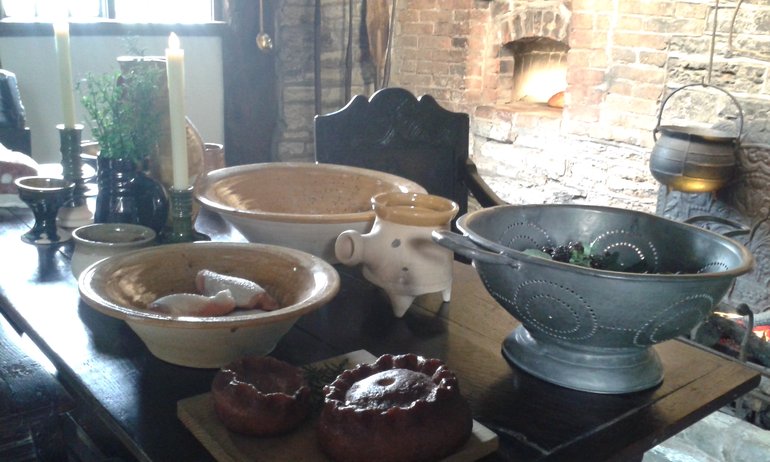In our last post, we were talking about the new direction at Anne Hathaway's Cottage, and we gave you a brief overview of the site's history. Today, we are going even more in depth into the story of how the cottage developed under the ownership of Anne's brother, Bartholomew.
When Anne Hathaway’s father died in 1581, he bequeathed the tenancy of Hewlands Farm (now Anne Hathaway’s Cottage) to his second wife Joan, with the assurance that his eldest son Bartholomew would care for her and have use of the land. When Joan died in 1599, Bartholomew became the main tenant of the farm until 1610, when he bought the freehold for £200. Although the three-roomed medieval structure the Hathaway’s lived in was not considered a poor dwelling in the 1500s, by the early 1600s it would have been. Bartholomew was living at a time when the amount of rooms a person had in their home reflected their status in society, and he was a very prosperous sheep farmer with some wealth. Now the owner, Bartholomew was able to make improvements to his home, and extensive building work began.
Bartholomew added a two-storey extension to the end of the cottage. Unlike the original section, which was a medieval cruck framed house, the addition was box-framed and more typical of the early 1600s style. Bartholomew was now required to remodel the original part of the house to include an upper floor, in order to link the two sections together. This meant that by 1615 the cottage had grown in size to ten rooms.

From the inventory of Bartholomew’s last will and testament dated 1624, we know that he was a prosperous and fairly wealthy man. He owned many pieces of furniture including three beds, many chairs, benches, and stools. Furniture was expensive in this period, especially large pieces such as beds which, although fashionable, were not affordable for many people. For this reason beds were only used by adults and were often passed down and lasted for several generations of a family.
The inventory also gives us a clue as to what each room was used for and what it contained during this period. It seems that the kitchen was not just used for cooking, as it also contained equipment for the production of alcohol and textiles. Many of the bedrooms are listed as containing food such as cheese, apples, and oatmeal, so evidently they were used for storage as well as sleeping.

In 1615 Bartholomew’s sister Anne was living in Stratford-upon-Avon with her husband William Shakespeare. They had been married for 33 years and now resided in New Place, the biggest house in Stratford. They both would have seen the development of the cottage by Bartholomew and would have known it almost as it stands today. It has even been suggested by some historians that Shakespeare lent Bartholomew money to purchase the freehold of the farm and extend the farmhouse, although this has never been proven. At the very least, we can imagine Anne and William taking the journey to call on Bartholomew and his family to inspect the newly renovated farmhouse.
